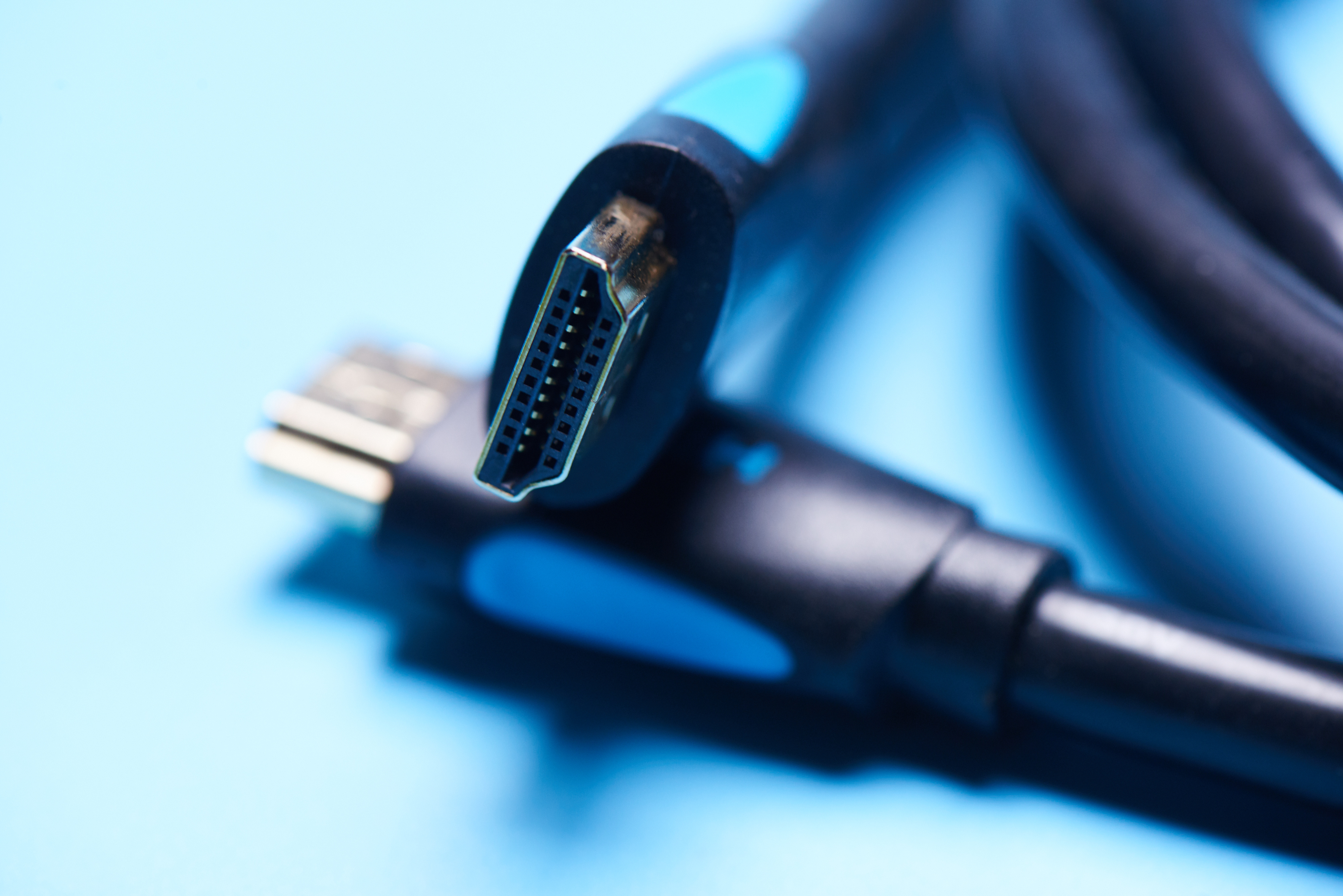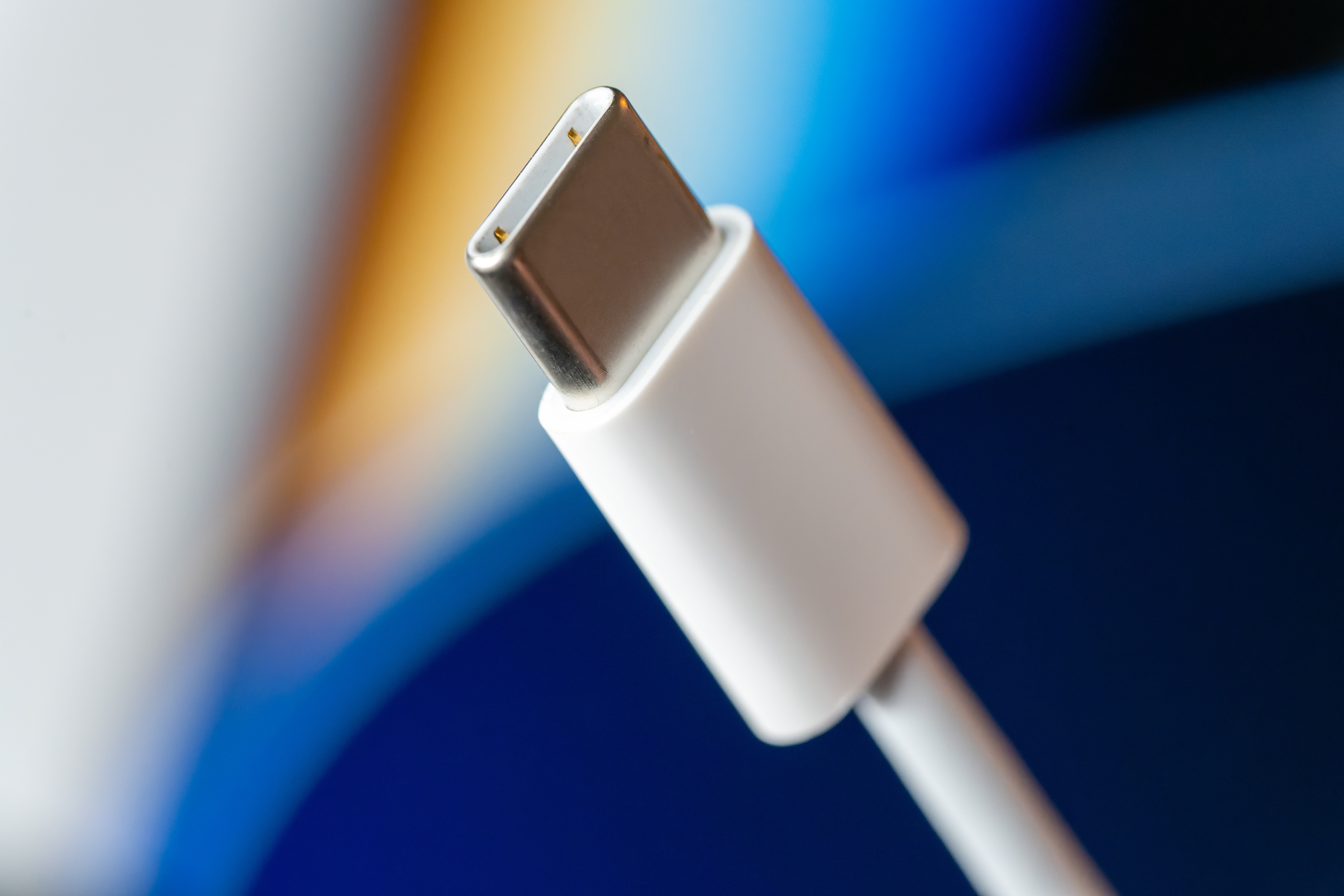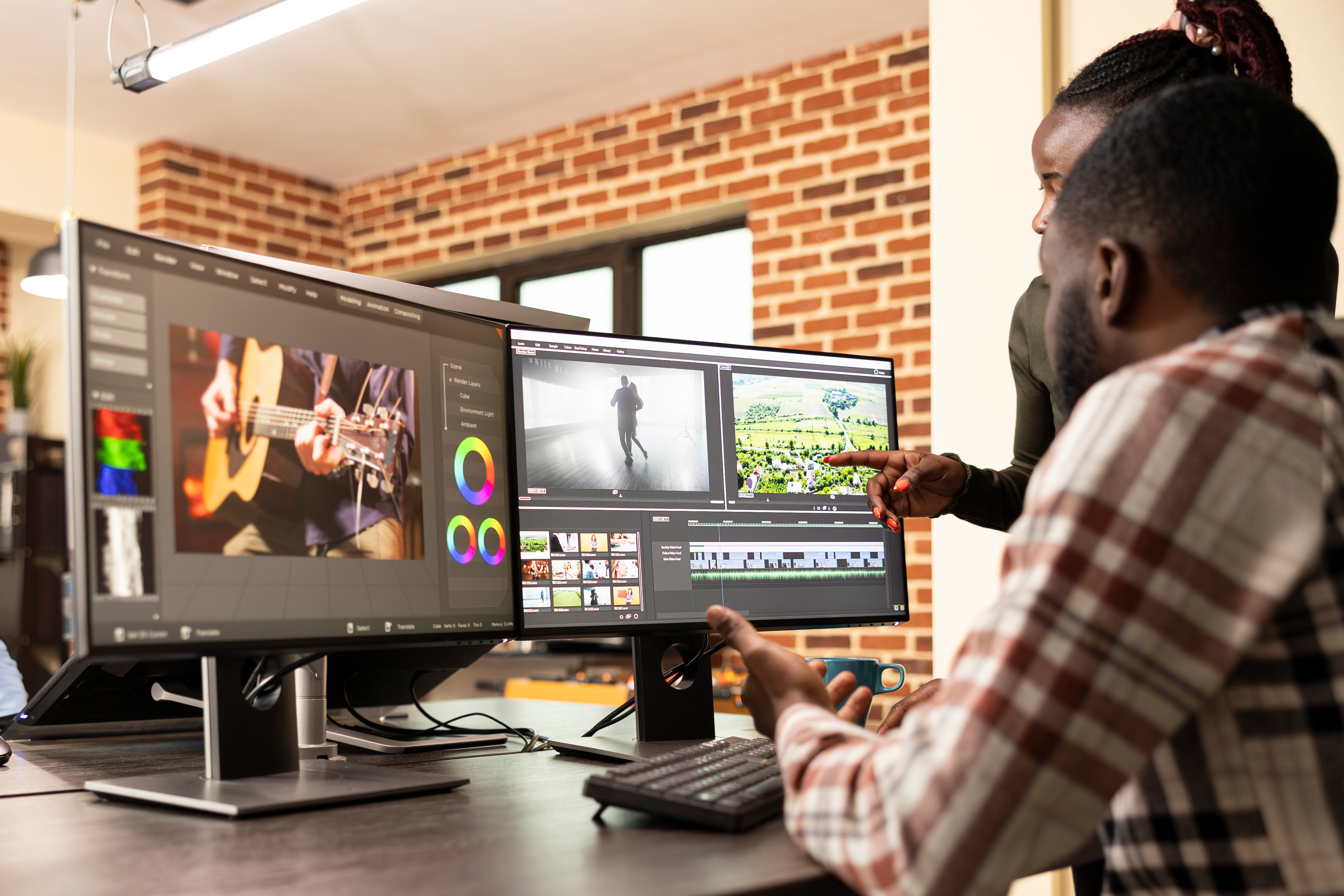
Over the years, connectivity options have increased when it comes to linking up screens, multiple monitors and a selection of different devices, including best laptops for video editing.
Central to this is the fact that newer modes of connectivity, such as USB-C, can also offer data transfer as well as video and audio signal – we’ll discuss the merits of each system in this article, as well as how in the realm of digital creativity, understanding these systems and how to make the most out of them is paramount.
As HDMI and USB-C interfaces determine how you connect to the best monitors for video editing, transfer data and power devices, they directly impact workflow efficiency and output quality as well, so it’s worthwhile having a grasp on them. So, let's get into it!
What is HDMI?

High-Definition Multimedia Interface (HDMI) is an audio and video interface that was introduced in 2003, largely to replace the increasingly outmoded DVI format. HDMI was designed to transmit uncompressed video and audio data and since the early 2000s has become the standard for connecting high-definition devices. It supports various resolutions, from standard definition to 4K and beyond, and is commonly found in almost any monitor, television and projector on the market, as well as a wide array of consumer electronics. Like any technology, time sees the platform upgraded, so over the year HDMI has evolved, with versions like HDMI 2.0 and HDMI 2.1 offering enhanced bandwidth and features such as higher refresh rates and dynamic HDR.
What is USB-C?

Designed to replace the first incarnation of the USB port, USB-C, or Universal Serial Bus Type-C, is a very versatile connector standard that’s emerged over the course of the last decade. It’s Characterised by its small, reversible design, which unlike USB-A makes it very easy to use on the go. What’s also useful is that it support a multitude of functions, including data transfer, video output and power delivery and its adaptability has led to widespread adoption across a number of small devices from smartphones to laptops and docking stations. For creatives it’s also notable and interesting because USB-C can also support different protocols through alternate modes, so DisplayPort can be used to power screens, and Thunderbolt for high-speed data transfer and video output capabilities.
HDMI Compatibility

HDMI’s widespread adoption over the course of the last twenty years ensures compatibility across a broad spectrum of devices, so it’s unlikely many devices on the market at the moment won’t come with an HDMI option. Whether connecting a laptop to a monitor, a games console to a TV or a PC to a projector in a conference room, HDMI is still the fail-safe go-to and provides a reliable and straightforward solution. Its plug-and-play nature means devices typically recognise connections instantly, minimising setup time, but it’s worth bearing in mind that they only support video and audio and not data transfer, so additional cables will be required for other functions. HDMI is also now an older platform and it’s time may be limited. Some devices, most significantly Apple’s MacBooks started shipping a few years ago with USB-C connectivity only.
Data Transfer
For devices that offer USB-C, its versatility extends beyond connectivity and its ability to transmit data, deliver power and support several video outputs makes it a multifunctional interface that’s here to stay. There’s a design and aesthetic benefit too, as one cable that provides a multitude of functions reduces clutter, simplifies setups and means you have far less lead management to carry out.
The caveat to all of the above, however, is that not all USB-C ports are created equal, and the capabilities of a USB-C port depends on the specific protocols it supports. For example, some USB-C ports may support DisplayPort Alternate Mode for video output, such as on a Mac, while others might include Thunderbolt 3 or 4 support that offering higher data transfer rates and enhanced display capabilities. Some may only offer one or the other, or a lower transfer rate.
Compared to HDMI, there are more variables to content with and a larger array of setups on offer, which makes it useful to know your requirements as a creative before you take the plunge on a USB-C only setup.
Which is best for creatives?

So, in conclusion, if you’re a creative professional and you’re looking at these two different interfaces, how do you know which one to choose or favour over the other? It really hinges on your specific needs and device capabilities. If you’re a photo editor, for example, HDMI offers robust and reliable transmission, making it ideal for straightforward display connections and accurate representation of colour across industry standards. It also opens you up to more screens and cheaper display options, such as its ubiquity.
However, as technology progresses, there’s no doubt that USB-C, with its multifaceted data and power capabilities, provides a more comprehensive solution. Its ability to handle multiple things through a single port can streamline workflows and reduce the number of cables required, and this consolidation is particularly beneficial if you’re a creative who juggles multiple devices and peripherals. It’s also a more future-proof platform, and if I was a video editor or content creator, I would spend a little more money to purchase kit with high-speed USB-C compatibility to ensure compatibility with emerging technologies. Nonetheless, it’s crucial to ensure that your USB-C ports support the necessary protocols, such as DisplayPort Alternate Mode or Thunderbolt, to fully leverage these benefits.
Generally, USB-C’s versatility and expanding adoption make it a more adaptable choice for creatives today, but if you’re working on older hardware, or would like to link up multiple screens, HDMI still provides a workable and ubiquitous option that can be operated for a fraction of the cost, too.







